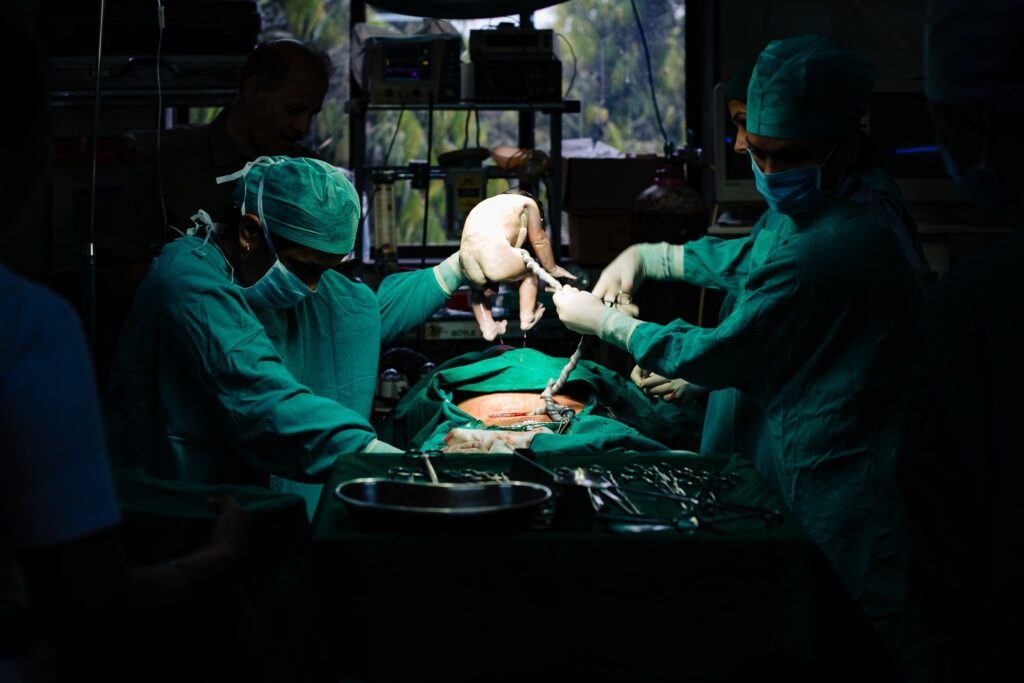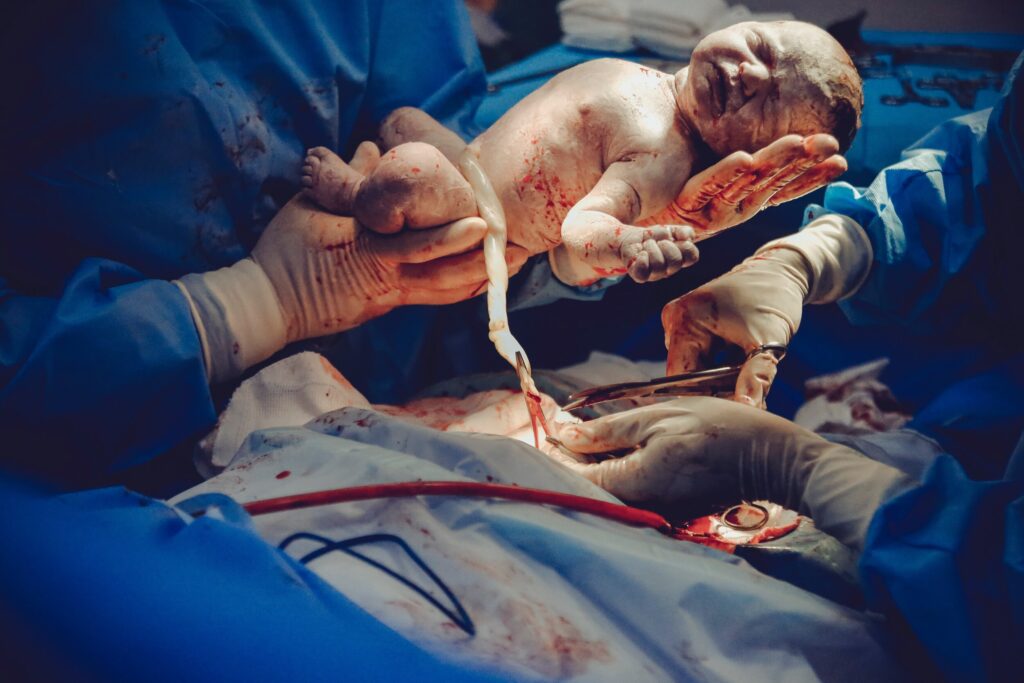Pregnant moms have two options when it comes to delivery: vaginal birth and Caesarean birth. While majority of moms prefer a vaginal birth, approximately one-third of births end up as a Caesarean or C-section delivery. A number of them are unexpected or due to an emergency.
For moms who intended to deliver naturally or normally (the former being without anesthesia and the latter with), undergoing a Caesarean can be terrifying. All of a sudden, they have to go through a major surgery. This article hopes to prepare moms, just in case they find themselves facing an unexpected C.

Decision-making and briefing
If a C-section is unexpected, the doctors will come in and explain why the C-section is necessary. It can be due to breech presentation of the baby, placenta problems (such as placenta previa), fetal distress (often characterized by low oxygen levels and either a slower or faster heart rate), and cord coil, among others.
Once the OB-GYN has stated his case, an anesthesiologist will explain what is to be done for pain management. The doctors will check if the mom has had any history of allergy to painkillers. The anesthesia given is either a spinal block or an epidural. These options allow a mother to stay awake during the procedure so that she may witness the birth of her child. In some cases, however, general anesthesia is necessary, so the mother will be asleep.
In some cases, a mom is on her way to deliver vaginally, but complications call for a Caesarean surgery. In which case, all of the above is done very quickly.
Prepping
Once it has been established that a woman needs a C-section, nurses will begin prepping her. This can include shaving her pubic hair so that the doctors will be working on hair-free skin; removing nail polish so that the doctor can better monitor her vitals; and perhaps other steps to make sure the doctors can do their best work.
In the operating room, prepping involves administering the anesthesia and making sure the mom doesn’t feel anything. Often, she will only feel pressure, but not pain. Nurses and doctors may also place a catheter to assist with urination during the recovery period. This is done after the anesthesia has taken effect. Next, nurses may strap down the mother’s arms so that her body creates a T shape. This is to prevent the mother’s arms from shaking too much that it makes the surgical process difficult for doctors. A mother’s arms will shake because of her body temperature dropping once the incision has been made. The final step is to put drapes around the mother so that she does not see her surgery as it progresses.

The surgery
Once everyone is ready, nurses will check to see that they have everything in place for the doctors. Doctors will often talk to the mother as they go through the procedure, assuring her that things are going well.
So long as it isn’t an extreme emergency where doctors need to reach the baby as quickly as possible, a horizontal incision, right before the pubic hair begins is where doctors will cut. Also known as the “bikini cut,” this is preferred by most women.
After cutting through the skin, doctors will have to cut through fat, then move aside abdominal muscles, the bladder, and the intestines. In some cases, the doctors will remove the intestines and bladder so that they have better access to the uterus. Once the uterus is reached, the doctor will cut it open and begin suctioning the amniotic fluid, then put his hands inside and slowly birth the baby.
Mothers sometimes report feeling nausea once the baby has been removed from their body. This is very normal, and it will pass.
As soon as the baby is born, it is shown to the mother. The doctors will then weigh the baby, administer Vitamin K, measure, and clean the baby of amniotic fluid. The baby’s Apgar score is also taken. If the baby’s vitals are normal, the newborn is given to the mother so that she may begin breastfeeding. If the baby needs special attention, he will be taken to the nursery.
While this is happening, the doctors are busy at work sewing the mother back up, beginning with the uterus and then moving on to the proper placement of the organs and muscles until they sew up the skin.
Recovery
Though C-sections have very minimal risk, it is still major surgery, and with that comes risks such as blood clots, infection, and hemorrhage, among others. Pregnant women are also monitored for preeclampsia, which sometimes causes pre-term births that lead to C-sections.
During recovery, a mother is often asked to wear an abdominal band to assist in her healing process. It will also help the mom move around better when she begins walking more in the first few days after birth and upon arriving at home. She will often have to dress and care for her incision wound at home until it is healed enough for doctors to remove the stitches. She will be asked to take her time with the recovery process. It can be difficult, painful, and take longer than expected. Although most mothers will be fully recovered and able to exercise three months after the surgery.
Having an unexpected C-section can be disappointing for moms, especially if they had their heart set on a vaginal delivery. The recovery process of the C-section can also prolong this disappointment. Should a mom feel disconnected from herself, her body, or her baby, know that it is very normal to feel this after giving birth. But there is plenty of help available and good steps to take to address these feelings.
Images from Unsplash and Pexels

Leave a Reply